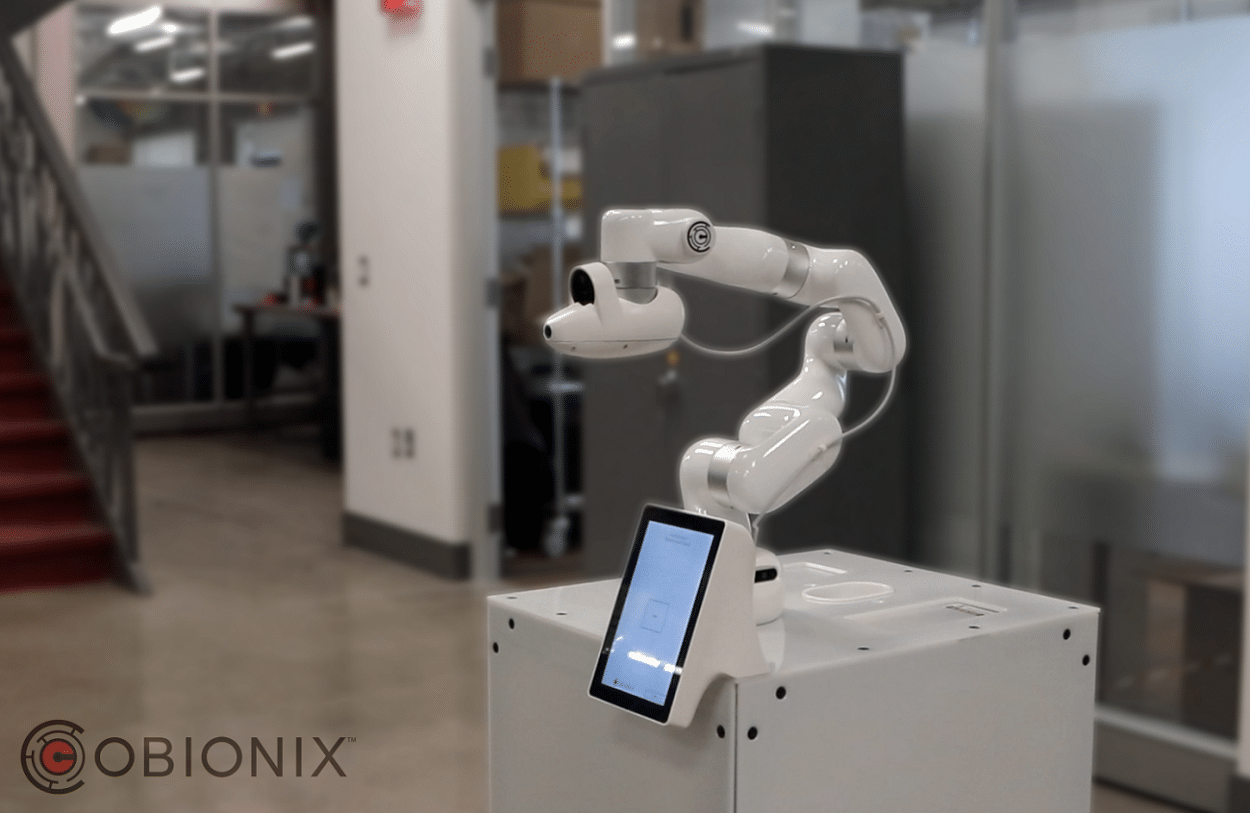As the Covid-19 pandemic has resulted in a surge in mass vaccination programs, medical engineers from Canada have demonstrated an innovative solution for inoculation. Cobionix, a start-up founded at the University of Waterloo, recently showcased Cobi, a versatile robotics platform that employs a needle-free injection technology to administer intramuscular injections, including vaccines.
Cobi stores the vaccines, uses sensors to create a model of the individual’s body, employs AI-based software to determine the best location for the shot then carries out the injection. If such technology was used widely, the benefits could be numerous, with robots helping to stem the spread of disease by reducing person-to-person contact, easing labor shortages and improving access to vaccination.
Watch this video from Cobionix:
But what do the experts think? Could technology really replace healthcare workers? And would the public accept an injection from a robot?
Dr. Lorenzo Jamone, Senior Lecturer in Robotics at Queen Mary University of London, says the technology exists for a robot simpler than Cobi, but suggests a smart robot might still have some way to go when it comes to human interaction. He explained:
“Technically it is very possible to use a robot to give a vaccine, but, when you want to use a robot in any application you basically have two options. You can change the environment to make it structured and easier for the robot to do what it needs to do, which is what they have done in industry—if you have a robot that has to pick up the parts of a car then it needs to know exactly where those parts are. Or you have to make the robot so smart that it can operate in exactly the same conditions and environment as a human worker would have done— it has to be able to find everything itself. The Cobi robot is a smart robot that will autonomously understand where the person is, but what would happen if the person suddenly moved?”
A Simple and Safe Solution
Dr. Jamone believes the technology required to deal with such a situation could eventually exist, but questions the need to over-complicate the technology when there might be a much simpler robotic solution. He suggested:
“With a smart robot, you require a lot more safety than if you have some kind of cubicle that people just walk into and put their arm into an enclosed space. If the patient’s arm was fixed in place then you wouldn’t need a very sophisticated robot, you would just need something that goes back and forth and does the injections. I think this would be much simpler and much more secure.”

He understood why a need-free technology, such as a high-pressure fluid jet, would be required to reassure members of the public.
“But if we have this technology, then why do we need a robot at all? Why not self-jab like we self-test?”
Public Acceptance
Mark McDermott, Professor of Health Psychology at the University of East London, agrees that the public would be more accepting of a vaccine robot if it did not have a needle. He said:
“If well thought through, designed and trialled—and people were able to see it in action—then I expect many would be receptive. If anything goes wrong though, what does the machine do then? Apart from feeling apprehensive, fearful, anxious, worried, the other thing humans may feel is objectified by being injected by a ‘thing’ or a machine. This may leave the patient feeling like an object themselves, which is never a good thing in clinical settings and is what all good doctor-patient relationships aim to overcome. It might well be that if more of the vaccinated felt objectified by the process, they might experience a greater proportion of adverse reactions afterwards, such as fainting. So, automation of vaccination may carry with it that unexpected ‘cost’ and it would need careful trialling to see if that difference emerged.”*
Dr Jamone believes gently introducing patients to the concept of a vaccine robot via a clinical setting with both robotic booths and human-staffed booths could be the solution. He said:
“I think we already have the technology to give robotic injections in a structured, cubicle setting, and so I would not be at all surprised if in five years or less we saw something like this happening. When it comes to something smarter, however, I think it will take longer, perhaps 10 years.”
He added:
“I do think that one day, however, we could even see mobile robots moving freely around clinics, robots that are able to navigate safely, interact with patients and even potentially vaccinate them.”
*MedicalExpo was keen to involve Cobionix in this article, but despite several attempts to contact the company we received no response.











